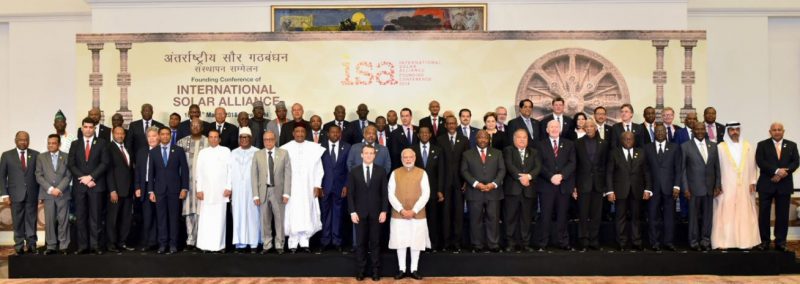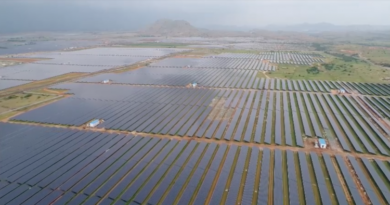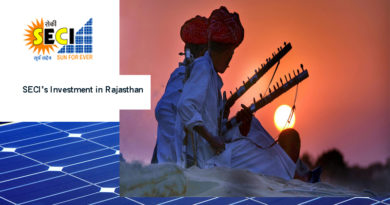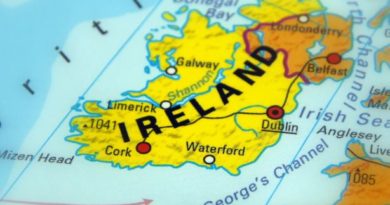The ISA Moves Ahead with 1st Technology Summit

The ISA held a curtain raiser for the first World Solar Technology Summit virtually on September 8. The Gurugram headquartered ISA, despite its strong backing from its founder members, has made somewhat slow if steady progress, since its initial launch in 2015. With 67 countries having signed and ratified its framework agreement (86 have signed the agreement) , the ISA is certainly a global force today.
In an event that would normally have been held in any of the major member countries, with all the pomp and glitter of a global event, the virtual event is leaving no stone unturned to make it count. That, when it finally happens will be yet another huge achievement, considering what the ISA is up against.

An ‘indifferent’ China. China, which supplies close to 65 percent of the world’s solar equipment, and has existing capacity for over 100 percent if required. China, which has been by far the biggest factor in making the very idea of ISA possible, by helping drive down solar costs to levels that practically no one predicted a decade back. China, which by virtue of the two reasons above, is one country that has both the capacity and the track record, to pump in billions of dollars to any initiative as closely aligned to its own goals as the ISA is.
But China is not even a signatory, forget ratifying the ISA charter agreement. During a tour of China last year to meet some of China’s biggest solar players , your writer repeatedly asked this question of the hosts. What do you think of the ISA, and are you looking to engage more deeply with the organisation? The response, not surprisingly, was mixed. The Chinese firms seek and need fresh business far more than anyone else in the solar space, thanks to the massive capacities they have built up. But at the same time they are wary of the ISA for two reasons. The missing endorsement from the Chinese Communist party government, and the ISA’s unapologetic brief of driving down rates further through demand aggregation, better negotiations, and anything else that works to achieve it.
For both India and France,the ISA founders, the closest they have to world class firms in the solar sector are some EPC firms, with both the founders barely having any manufacturing capacity to make a global impact, yet. By basing the strength of the organisation in the sheer buying power it can aggregate, the organisation is clearly walking a completely different path. In all this, it is not that the China shadow is not tackled. Thus, the ISA’s tenders, as a UN signatory, are truly global tenders, open to firms across the world, including from China.
Clearly, the hope is that with solar power becoming a part of more and more energy consumption opportunities, gong well beyond grid supply and micro grids, the role of fresh technology innovations will become more and more relevant.
In fact, the ISA’s latest large tender is for Solar Home Systems. Handled by EESL, another government of India entity that won the rights to handle ISA tenders, the tender is for over 9.3 million solar home systems across ISA member countries, with a deadline of October 1.
Earlier, in an order valued potentially at $2.7 billion, the EESL had claimed that its tender for 2,72,000 solar water pumps had led to a drop in prices by almost 50 percent, from Rs 100,000 per horsepower (hp) across categories from ₹1 lakh per hp at the time.
One cold argue that even the shift towards solar water pumps, and now, solar home systems, is an effort to keep away from utility scale solar, an area where Chinese dominance is simply impossible to ignore, especially if low prices is your main brief.
But how long can the ISA ignore China? Or to put it another way, how long can China continue to pretend the ISA does not really matter?
For now, the Chinese seem happy with the dominance of the Beijing headquartered Asian Infrastructure and Investment Bank, (AIIB), another multilateral initiative launched around the same time as the ISA in 2015, an initiative which counts Germany, France and the UK, besides India as key members. Japan and the US have notably stayed out of the bank too, as they have from the ISA also. The AIIB, for the record, claims to have approved financing worth almost $19.2 billion on 90 approved projects so far . And coincidentally, is launching its own Climate Change Investment Framework on September 9, a day after the ISA Summit.
One can’t help but wonder, how different things could have been on the ground, if the ISA and the AIIB were to find more ways to work together.




